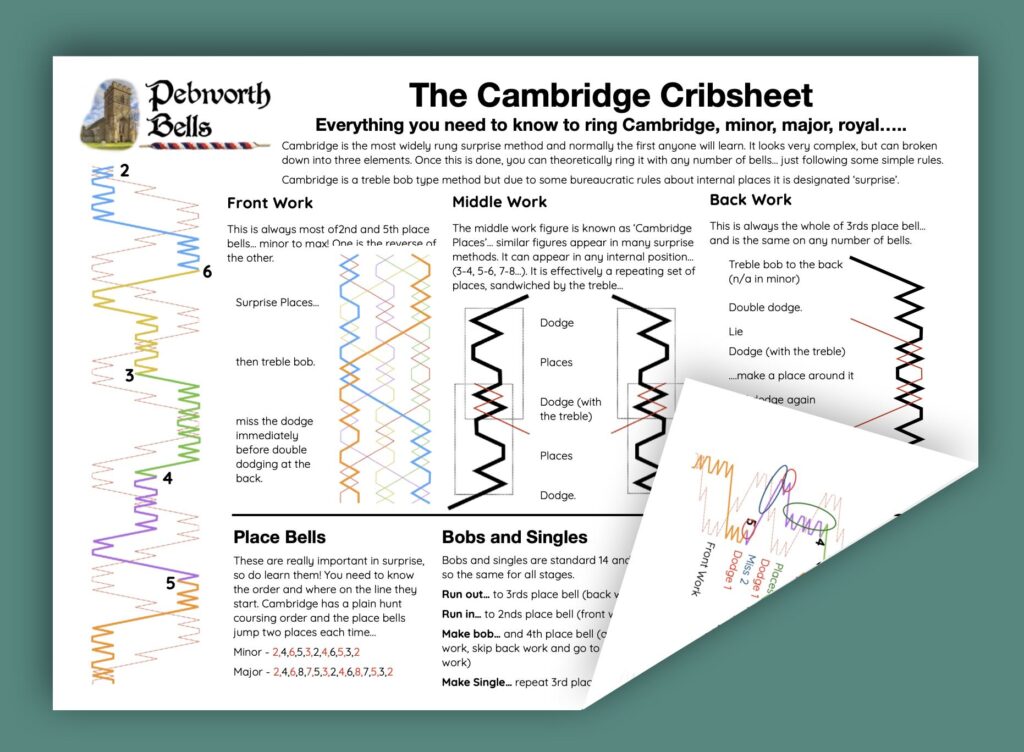Print our Crib Sheet
We understand that it is not always possible to look at an online page when inside a tower that has three foot thick stone walls… and some folks just like to have something tangible….
So to help, we have produced a crib sheet which prints as a two sided A4 sheet. (If your printer can print both sides, remember to set it to ‘short edge binding’ so the second page prints the right way up!)
The crib sheet contains most of the information you see on this web page and the Cambridge By Rules page, but formatted for A4 paper!
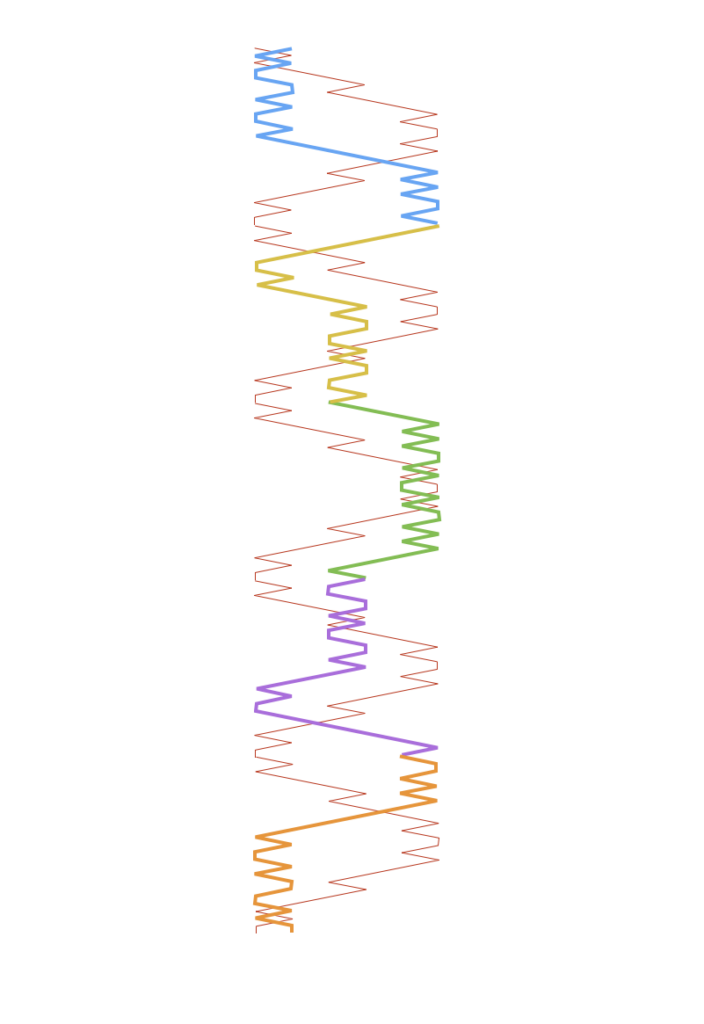
The Line
Cambridge is perhaps the best known and most frequently rung Surprise method.
It is regularly rung in many six and eight bell towers, as well as in royal and maximus form where there are more bells and advanced bands.
It is easy to predict and learn the extensions to higher numbers as they follows simple rules.
The Cambridge line breaks down into three larger blocks of work. These can act as a basis for learning many surprise and delight methods.
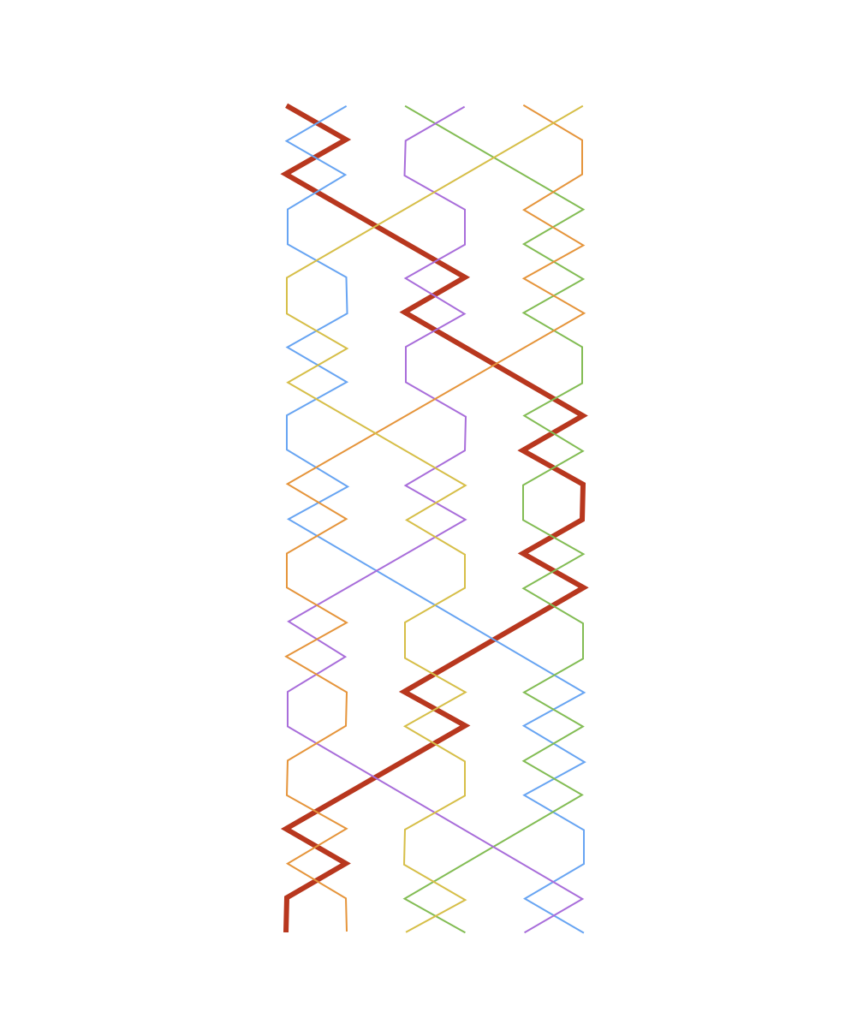
The Treble
This is a treble bob method. So the treble zig-zags its way from front to back.
Unlike treble bob hunt, there are no repeated changes and the coursing order is actually very different – 2 6 4 5 3.
As a result, the bells in a dodge are not easily predictable and you will need to use rope sight and rhythm to work out who to follow.
The biggest help is that both dodges at the back are done with one bell. This is also true for the dodges at the front… except when a bob is called.
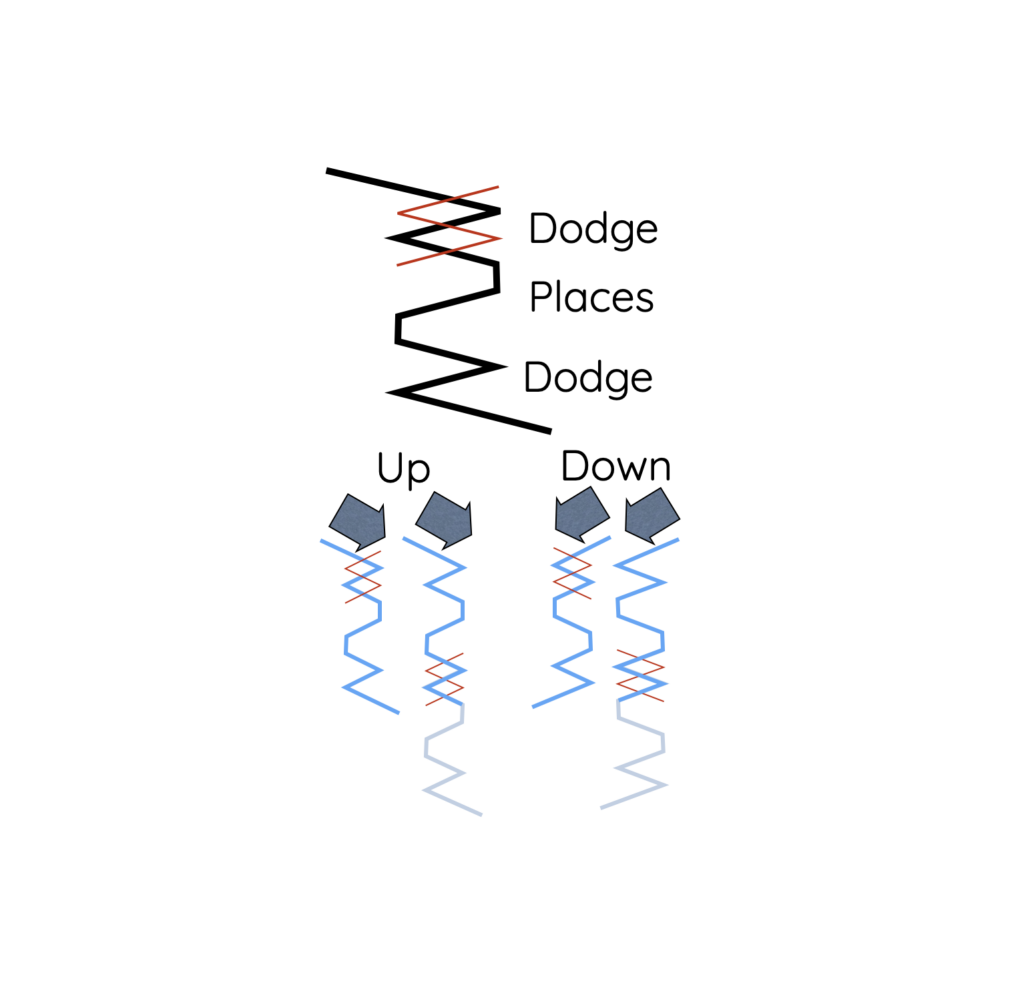
Cambridge/Yorkshire Places
It is helpful to break a long line up into smaller figures and patterns when you are learning.
This figure is very common and appears in many surprise methods, because it is largely a result of the rules that designate as them surprise.
The figure consists of a dodge followed by places and another dodge… but all in the same position…. It can be done in an up or down form.
It occurs at both 1-2 and 3-4 in Minor. You can add 5-6 as well in Major. The only place it does not occur, is the last two places.
One of the dodges will often be with the treble. This can be a useful reference point for even the most experienced ringer.
In Cambridge, this figure can happen twice consecutively, meaning the dodge with the treble is always in the middle…

Middle Work
There are two middle work elements… One up and one down and they are mirror images of each other.
Each is a double set of Places with the treble dodge in the centre.
The block runs for just over half a lead in minor and overlaps at the half lead and lead end… So someone is always doing middle work!
The 3-4 up and the down middle work appear immediately before and after the long back work.
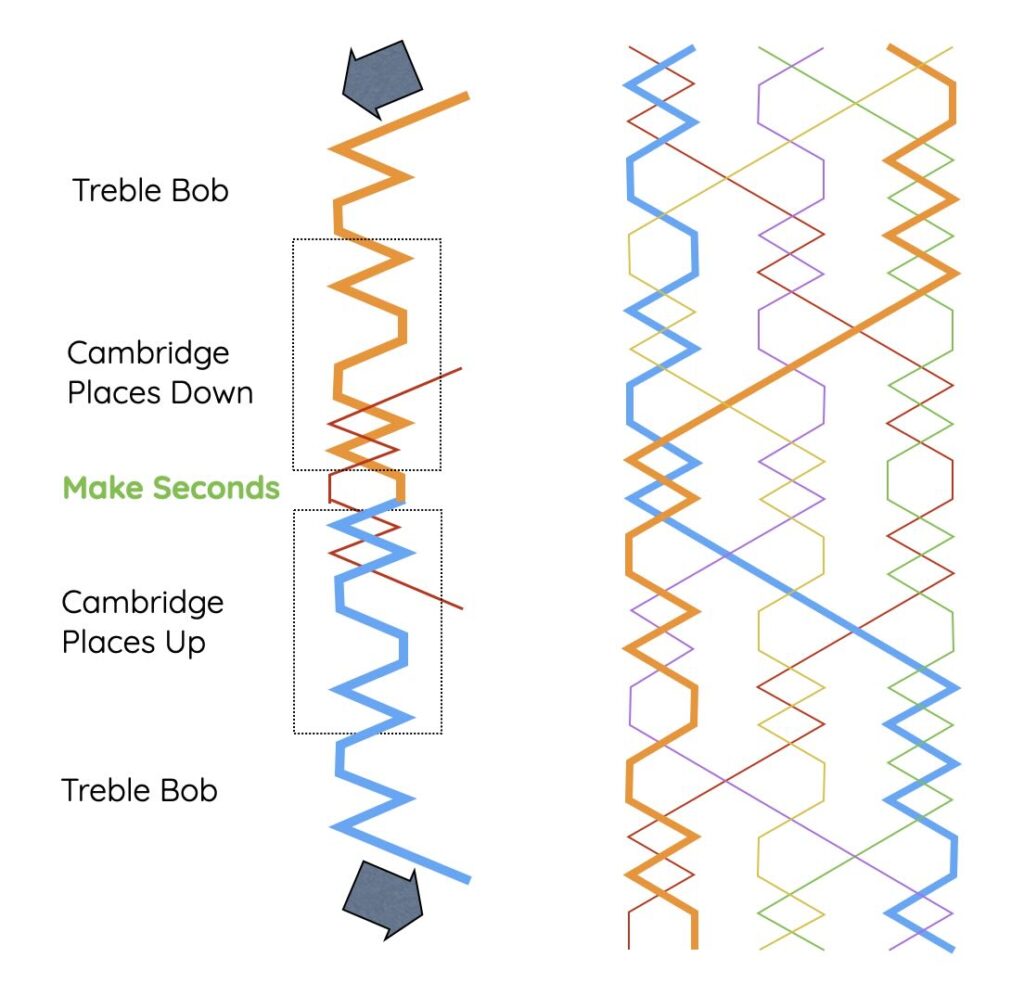
Front work
It is helpful to break the line up into manageable blocks when you learn a long line like Cambridge. The front work is one of those blocks…
It centres around making seconds place with treble (just like in Plain Bob)… but this is sandwiched by Cambridge Places down and up.
Before and after the Cambridge places there is a dodge and lead (as per treble bob).
Strangely, it is useful to extend this block of work all the way to the back… and start/finish it with a double dodge. This happens in all stages and the bell will treble bob in from or out to the back, missing the dodge adjacent to the double dodge because the treble is in the way.
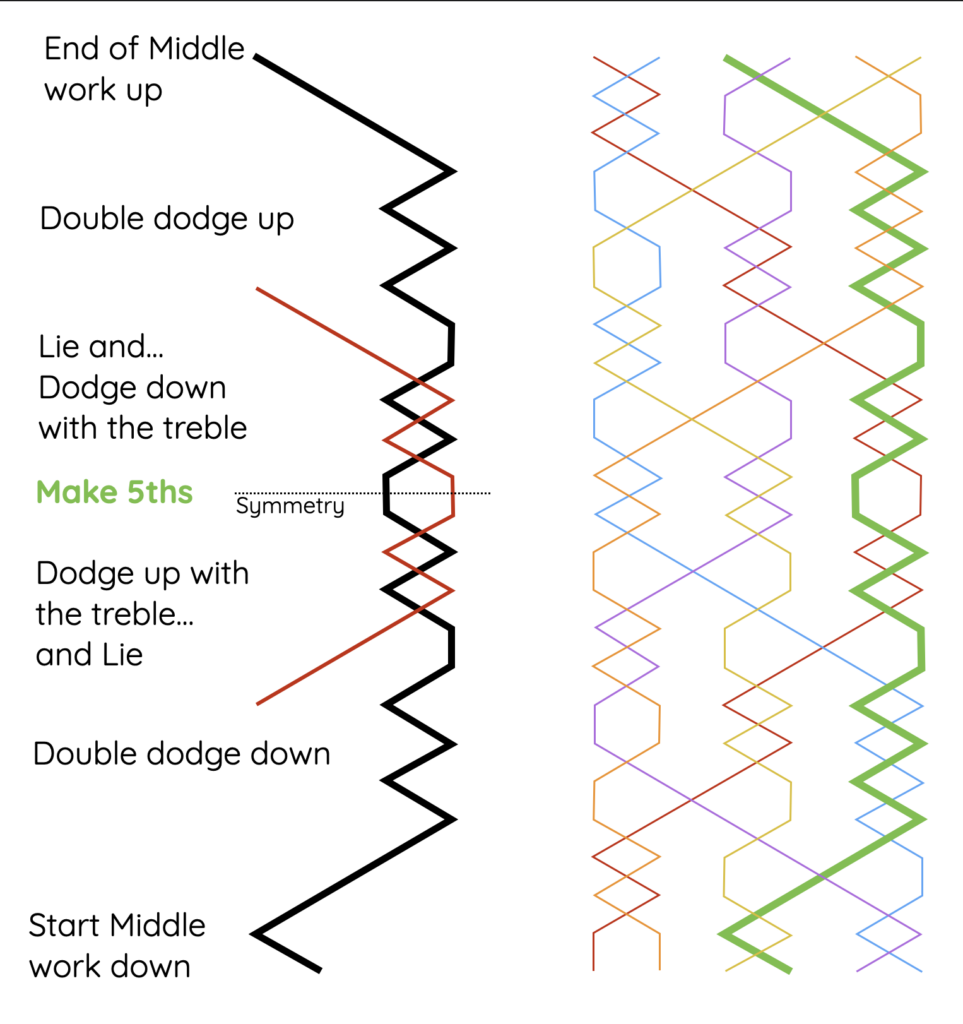
Long Back Work
The back work is the mid point for the line and therefore symmetrical about the half lead.
The symmetry point also coincides with the trebles dodge, so you dodge down and then up with the treble – making fifths in between.
There is a double dodge before and after the work with the treble.
The back work lasts for an entire lead.
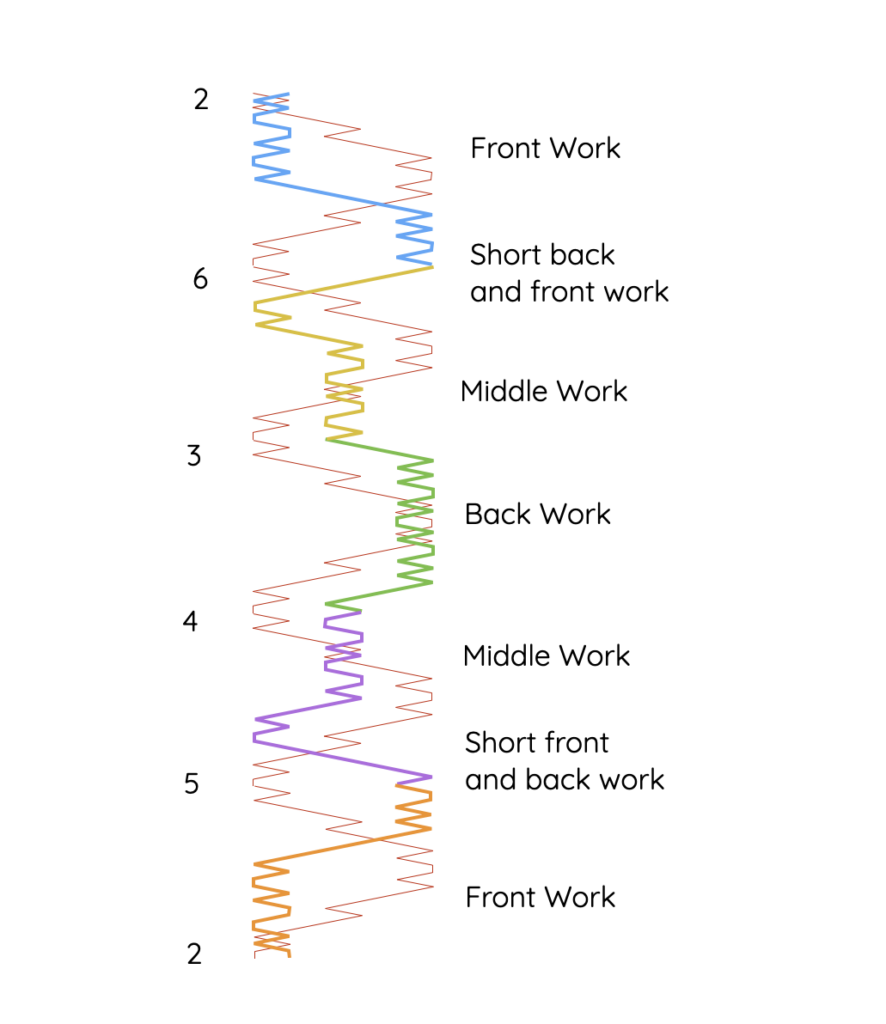
Place Bell Starts
It is essential to be able to quickly locate your position on very long lines.
We do this with place bells…
A place bell is the starting position of a bell.
The Cambridge place bell order is the same as the coursing order:
- 2, 6, 3, 4, 5.
Starts are as follows:
- 2 – Front work.
- 6 – Treble Bob with rules, then to middle work.
- 3 – Back work.
- 4 – Middle work, then treble bob with rules…
- 5 – Lie then front work…
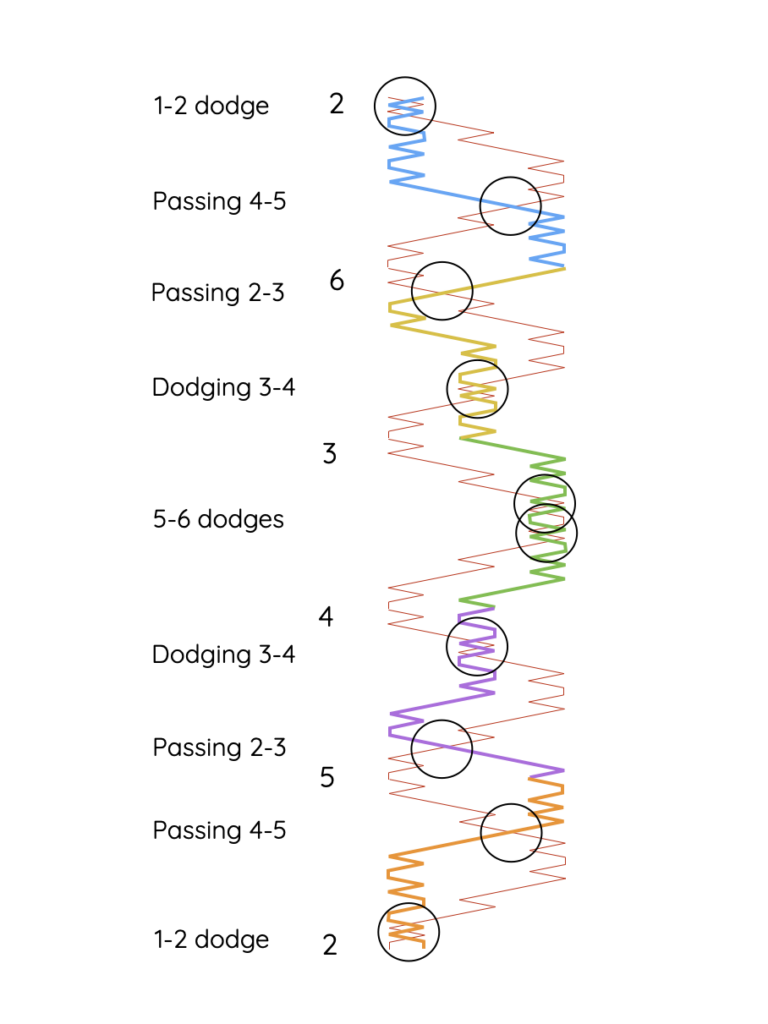
Passing the Treble
The treble is another useful locator…. If you know where you pass it, you can use it to confirm your position on the line.
- 1-2 dodges are at the end of 5th place bell and beginning of 2nd place bell, with ‘making seconds’ between.
- Passing 2-3 comes in the midst of the missing dodges in Treble bob with rules.
- 3-4 dodge is in the middle of the Cambridge places.
- Passing 4-5 happens between the missing dodge and double dodge.
- 5-6 dodges both occur around the half way point in 3rd place bell with ‘make 5ths’ in between.
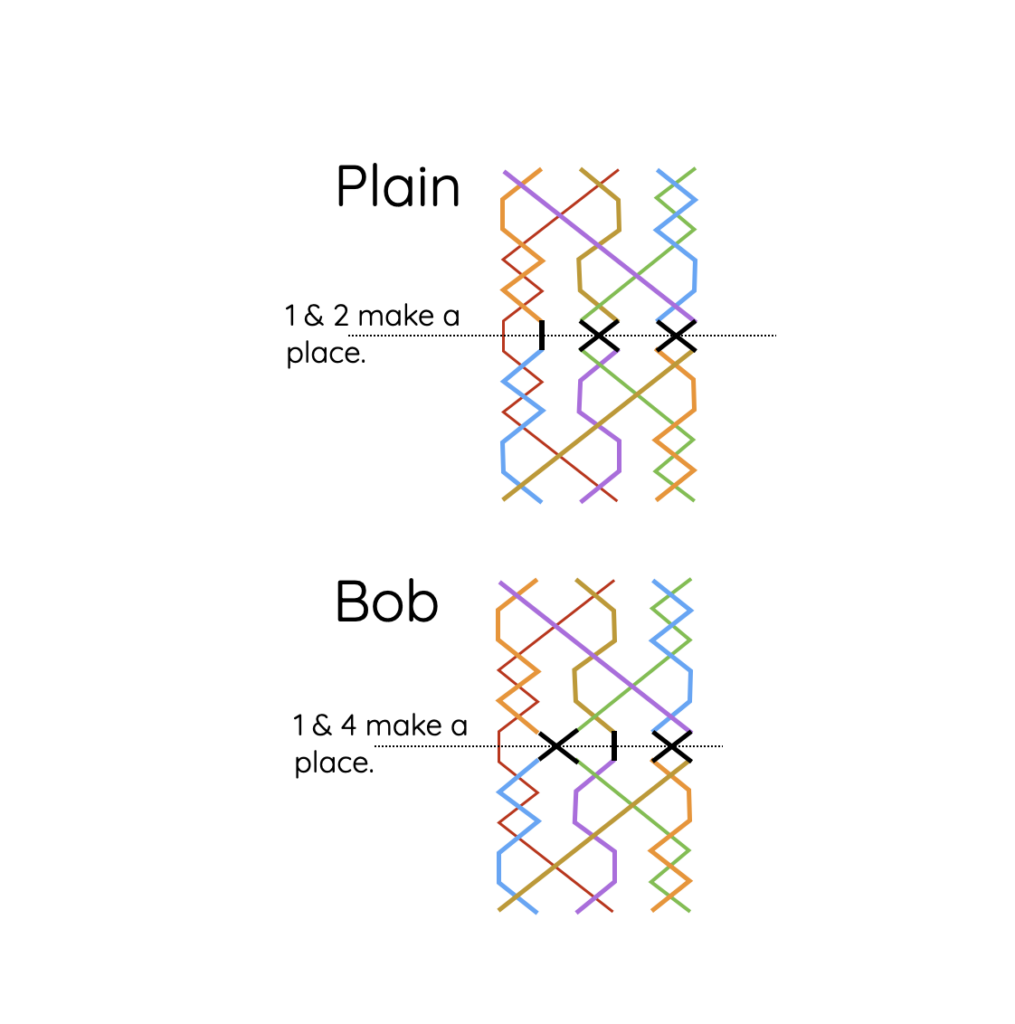
Bobs
Bobs are the same as in Plain Bob.
At a Bob…
- The front work bell will run out to the back work (3rds place bell).
- The back work bell (3rds place bell) will run in and dodge with the treble and front work.
- The bell completing the middle work will make an extra place in 4ths (making the bob), skip the back work and go straight into the next middle work. This effectively means making alternate 4ths and 3rds after the treble dodge until it returns again.
- The back bells are unaffected.
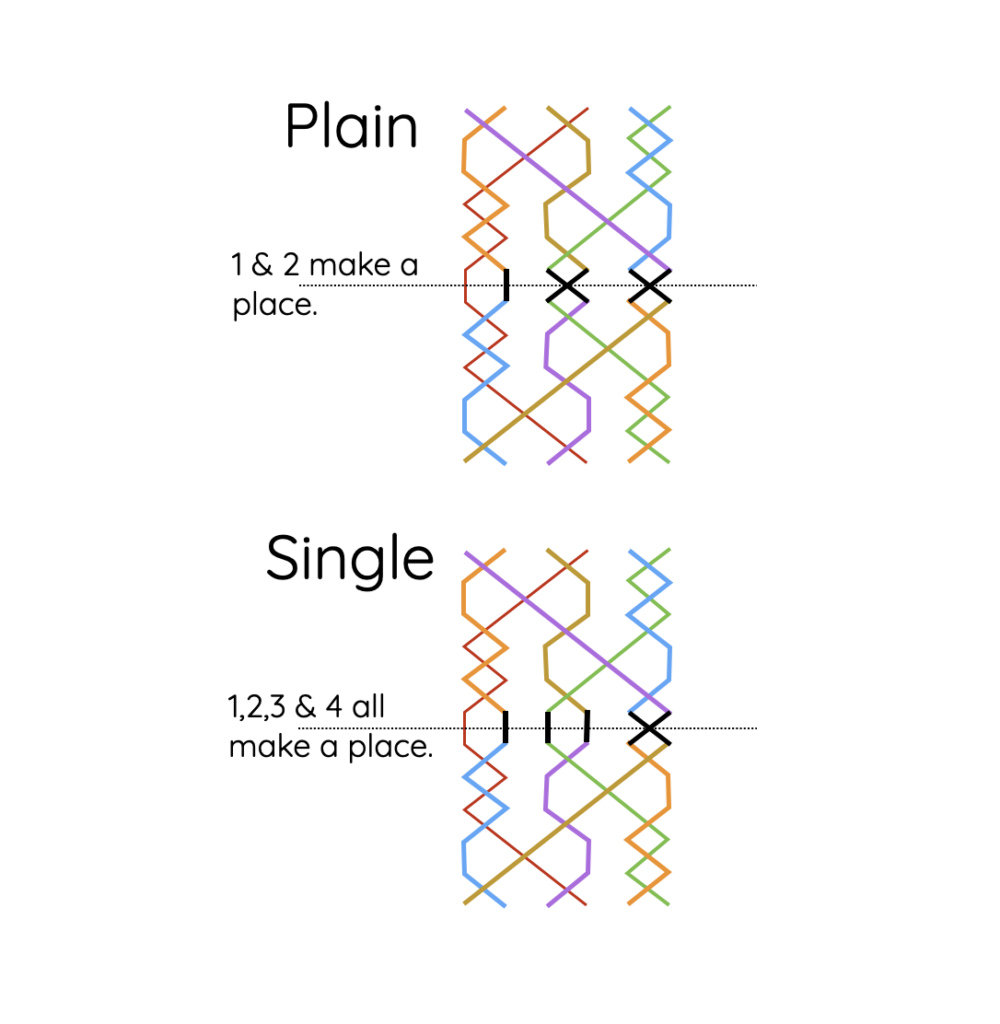

Singles
Singles are the same as in Plain Bob.
At a single…
- the back work bell (3rds place bell) will make 3rds (the single) and repeat the back work (3rd place bell again).
- The bell completing the middle work, will make an extra place in 4ths (making the bob), skip the long back work and go straight into the next middle work. This effectively means making alternate 4ths and 3rds from the treble dodge, until it returns for another one.
- Front work and the back bells are unaffected.
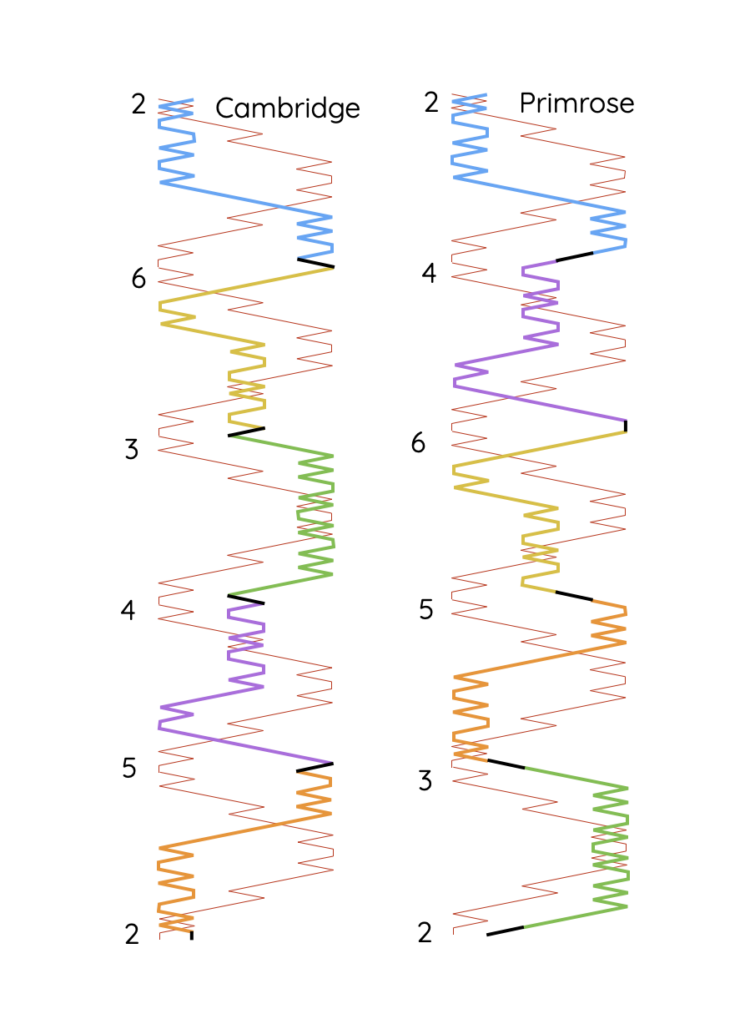
Primrose Surprise minor
Primrose and Cambridge are very closely related…
- Primrose is Cambridge with the place bells in a different order.
- The starts are all exactly the same as are the changes in each place bell.
- It is only the very last change – the lead end change – that is different, which means the place bells come up in a different order.
The place bell order becomes 2, 4, 6, 5, 3 instead of 2, 6, 3, 4, 5.
Everyone hunts instead of dodging at the lead end, … It is like running in or out at bob, only you do it in 4-5 as well as 2-3!
The exception is the bell hunting to the back (4th place bell)… It lies (pivots) and hunts back as 6th pace bell.
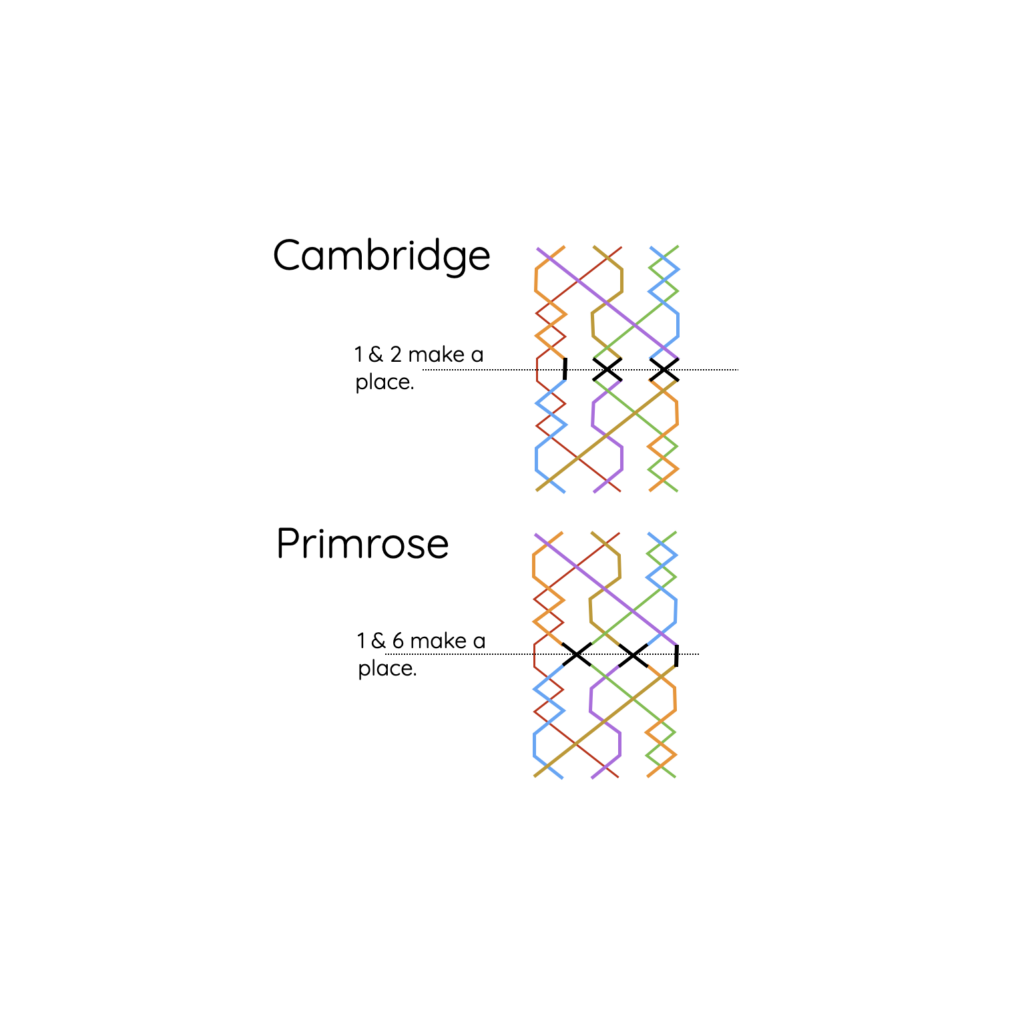
Primrose Lead-end
- Cambridge is a 2nds place method, because at the lead end, it is the bell in 2nds that makes a place with the treble.
- Primrose is a 6th place method. This is because at the lead end, the bell making a place with the treble is in 6th place.
Making 6th place is effectively Plain Hunt…
The net result is:
- the dodge at the beginning and end of the middle work disappears and is replaced with plain hunt.
- the single dodge in the short back work disappears and is also replaced by plain hunt.
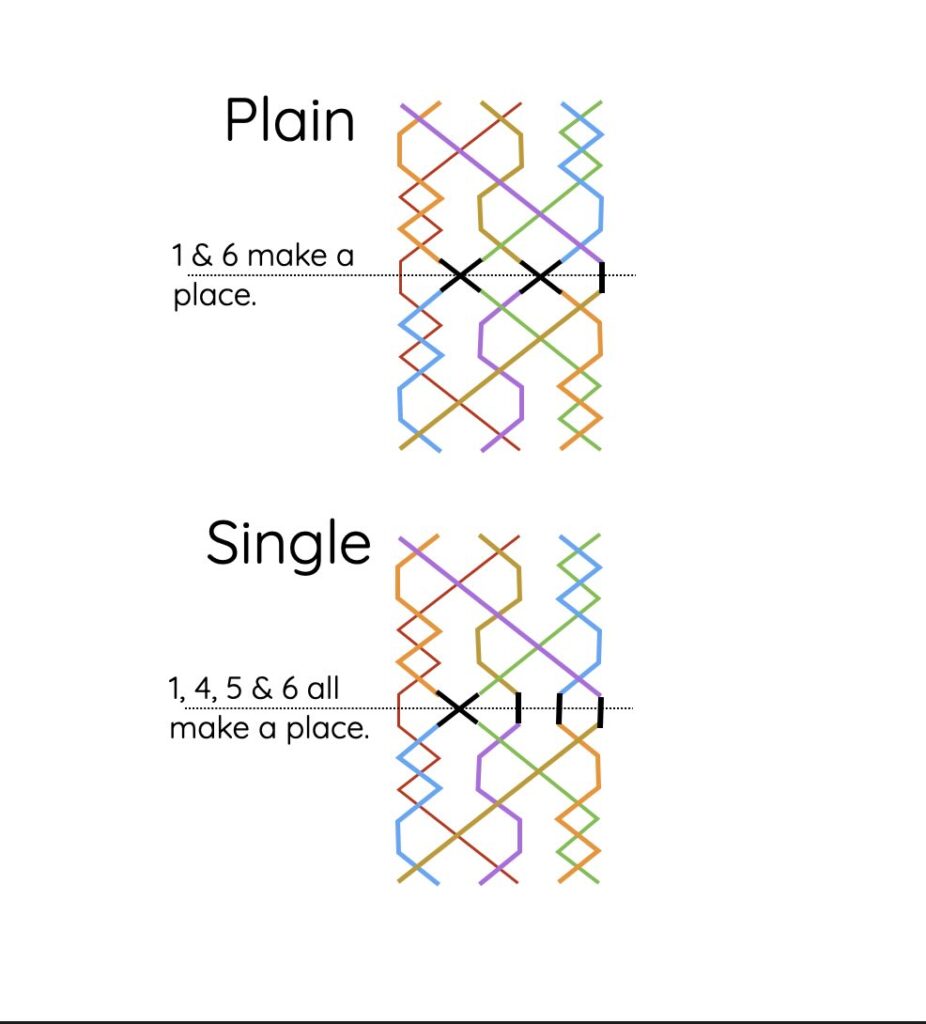
Primrose Singles
6th place singles are different from those used in 2nd place methods.
At a single…
- The bell completing the middle work (6th place bell), will make an extra place in 4ths (making the bob), skip the long back work and go straight into the next middle work. This effectively means making alternate 4ths and 3rds from the treble dodge, until it returns for another one.
- The bell doing the double dodge (2nd place bell) will make 5ths (the single) and do another double dodge to restart the front work.
- The other bells are unaffected.
Below are links to a couple of alternative tutorials…

